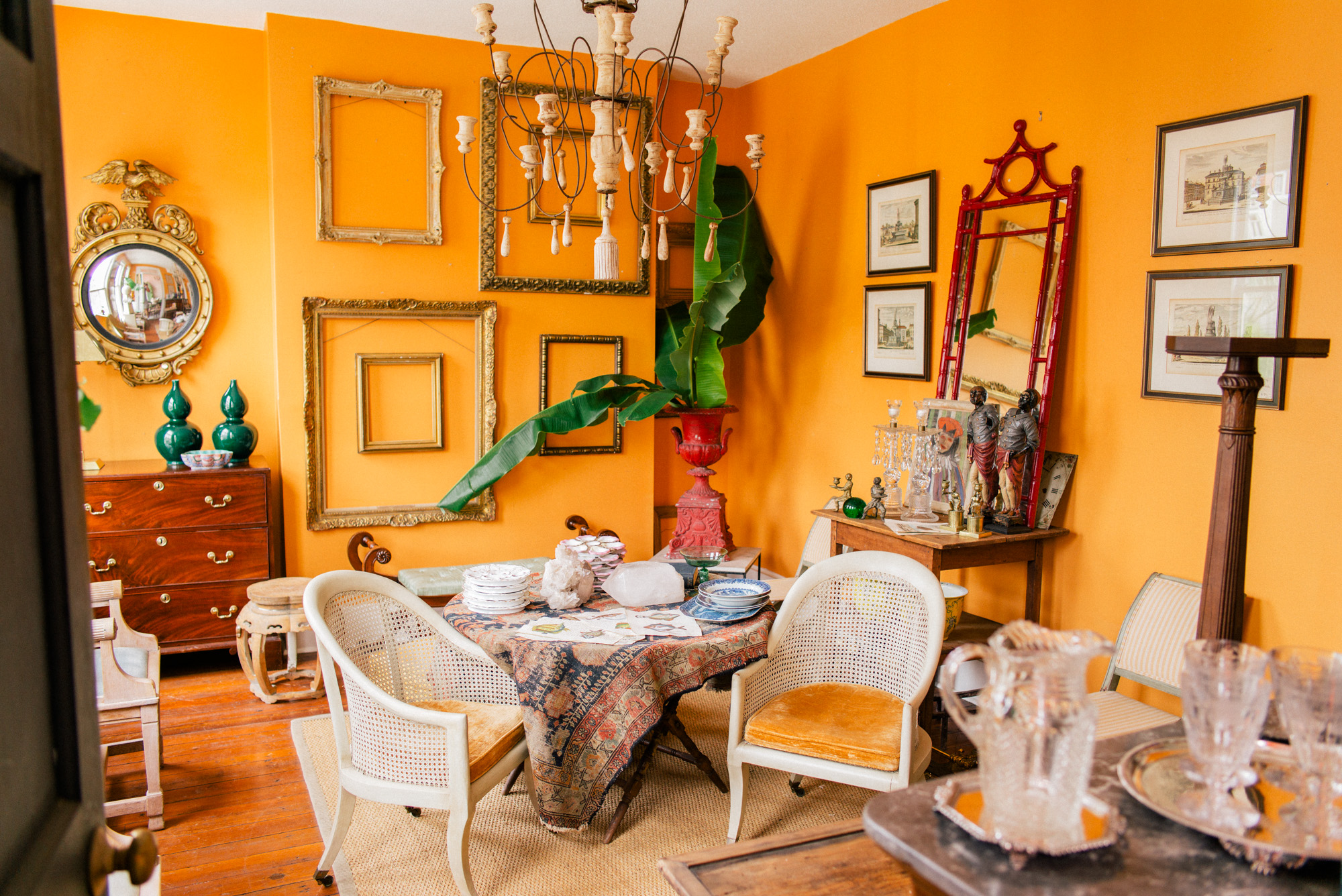
Our friend and interior designer, Olivia Brock is back again and this time she’s discussing Antiques. Antiques are something that I love and will be incorporating in our house. There’s nothing quite like discovering one-of-a-kind finds while in the middle of an antique hunt. But I’m sure that you can agree, as a non-expert on the topic of antiques, the thrill of finding something that initially catches your eye can quickly be replaced by doubt. Is this piece as special as I think it is? Is it worth the price? Is the price negotiable? Does it match my current décor? This time Olivia invited another expert in the field of antiques, John Pope. He’s welcomed us into his shop in Charleston, to take a look around at what he currently has and to discuss some of the many special pieces on display. What we’ve learned so far is that a little bit of knowledge can go a long way, and will be instrumental in fueling our next antique hunt. As with every post we do, we’d love your feedback and questions. We always try to address questions in the comments section whether in a direct answer or as inspiration for future posts!

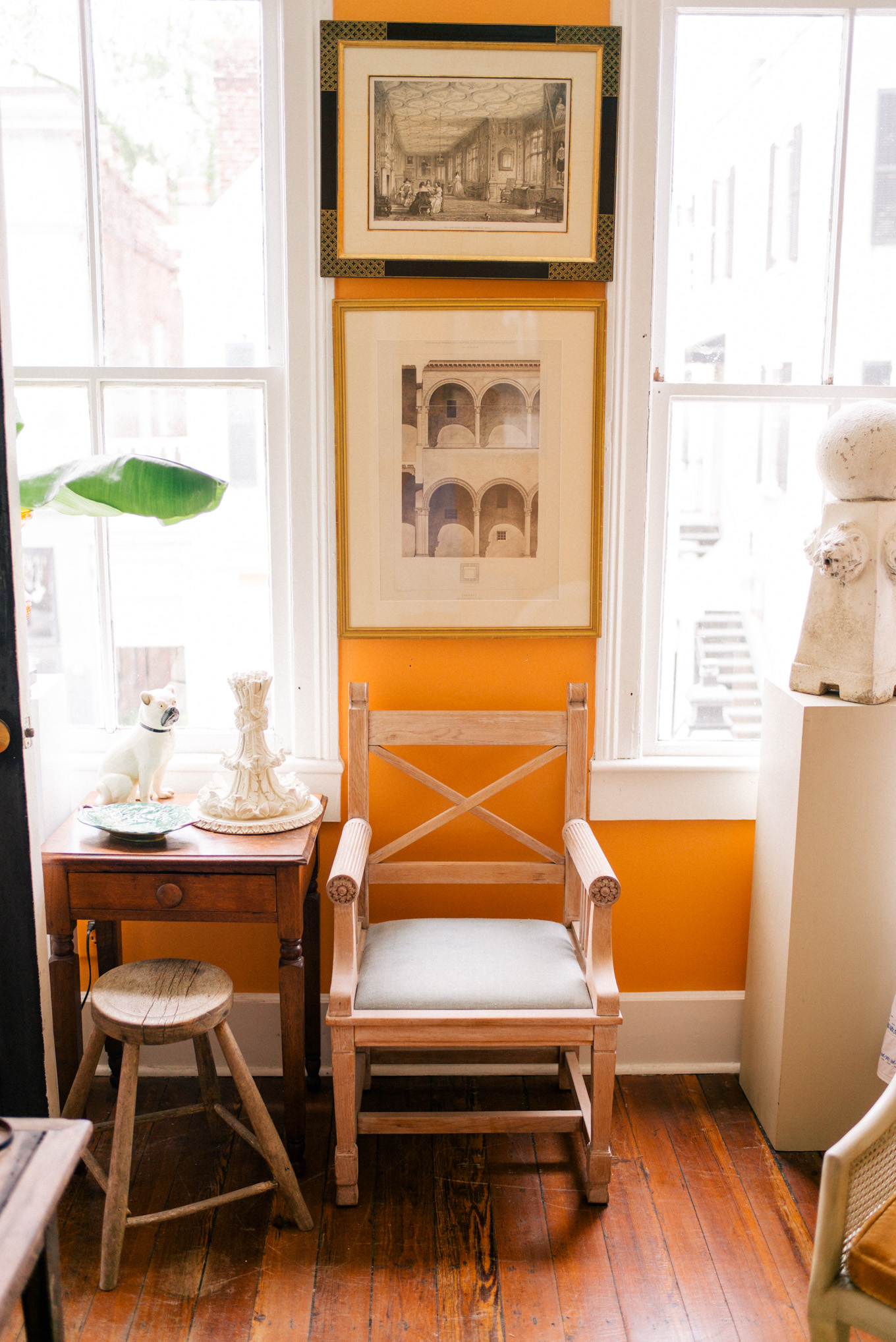
From Olivia:
“The Past is a Foreign Country,” or so says the title of a textbook that was required reading for my M.S. in Historic Preservation. Well, if the past is a foreign country, then it is certainly one where I fantasize about vacationing, the preparation for which I do by living in Charleston, and surrounding myself with antiques. “Antique” has become a bit of a dirty word as of late. Our desire for clean lines and convenience has diminished interest in the furniture of the so-called “foreign country.” I am here to say that the past is in fact not a foreign country, but quite accessible, through the furniture and decorative objects that remain.
To tackle this topic with me, I brought along my dear friend, and antiques dealer, John Pope @johnpopeantiques, who’s eponymous shop, John Pope Antiques, is one of the “must visits” on a stroll down Charleston’s famed King Street. The shop is an expression of John’s eclectic taste, which runs the gamut from 18th century mahogany to 20th century faux bamboo – and everything in between. Below, a little “shop talk”.
The greatest interiors have a timeless quality, and there are certain pieces of antique furniture that you will never regret buying.
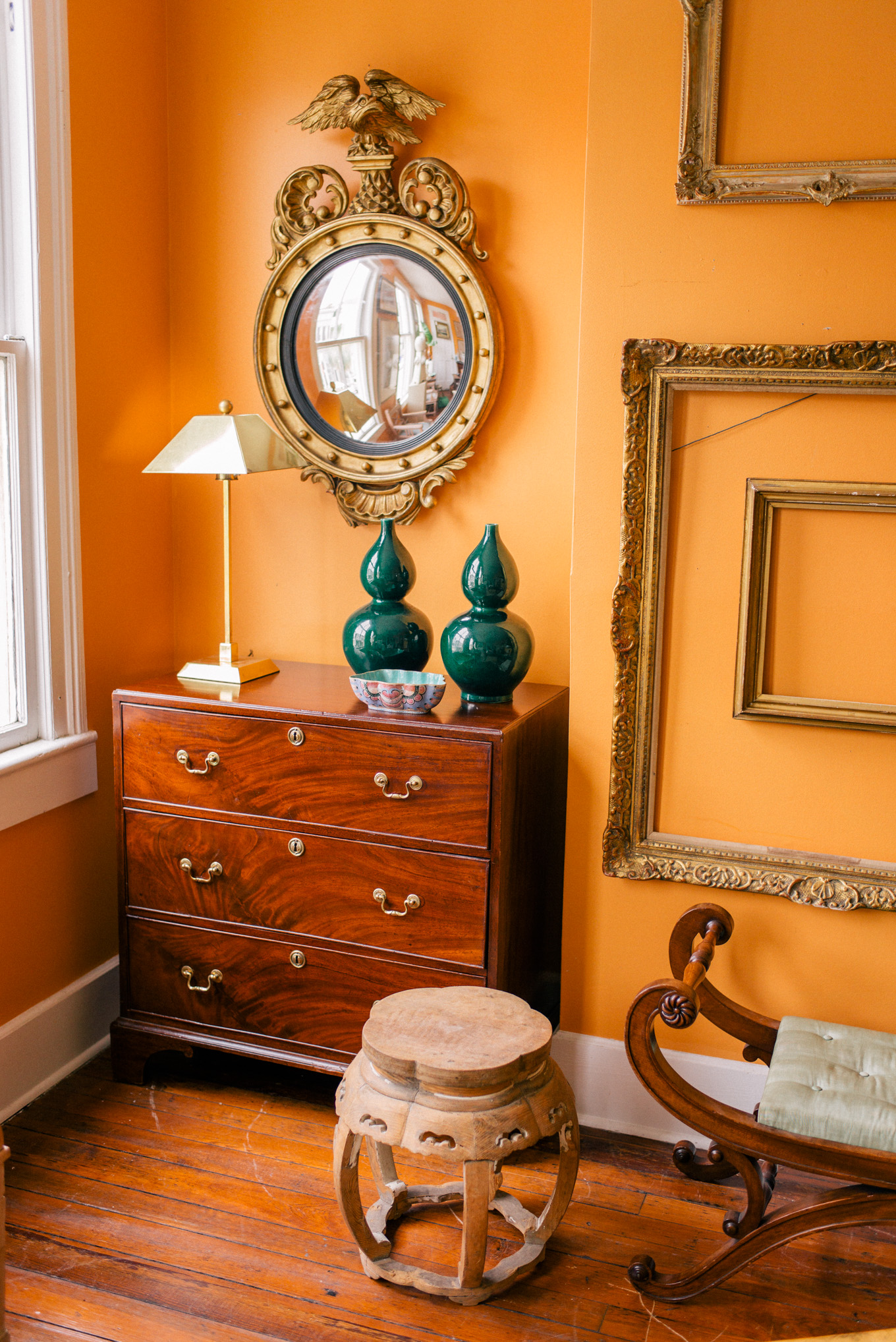
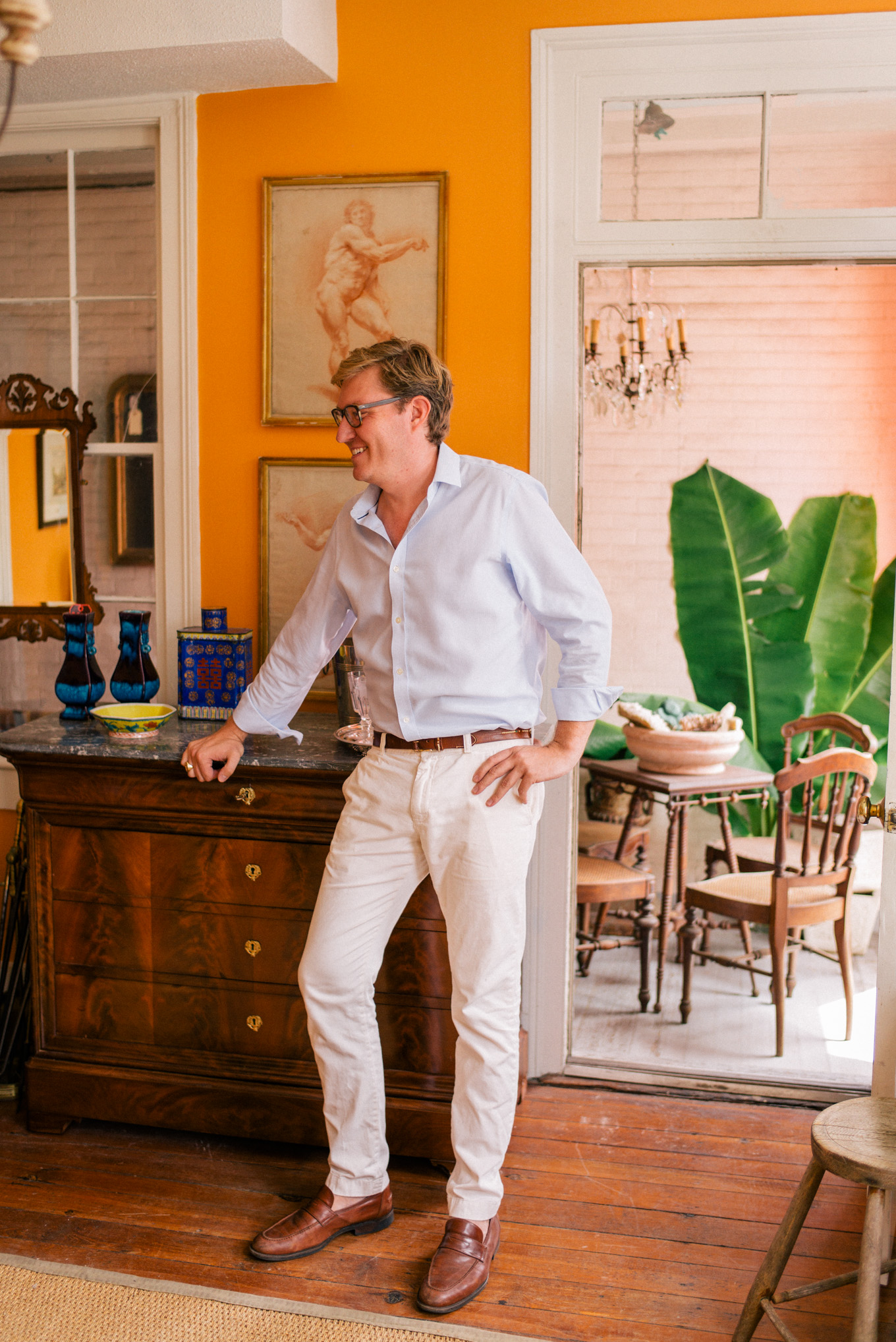
OMB: There are so many things happening here that I love – gourd vases, an un-lacquered brass light fixture, and a mahogany chest of drawers.
JMP: I love mixing styles and periods in the shop, the same way one might do in a home.
OMB: Despite the age of all these pieces, the scene feels so modern, so fresh.
JMP: Totally – and at over 200+ years old, a piece like this chest of drawers has definitely withstood the test of time. Antiques provide one with a quality of materials and construction that are not easily found in today’s throwaway culture.
OMB: Boom!

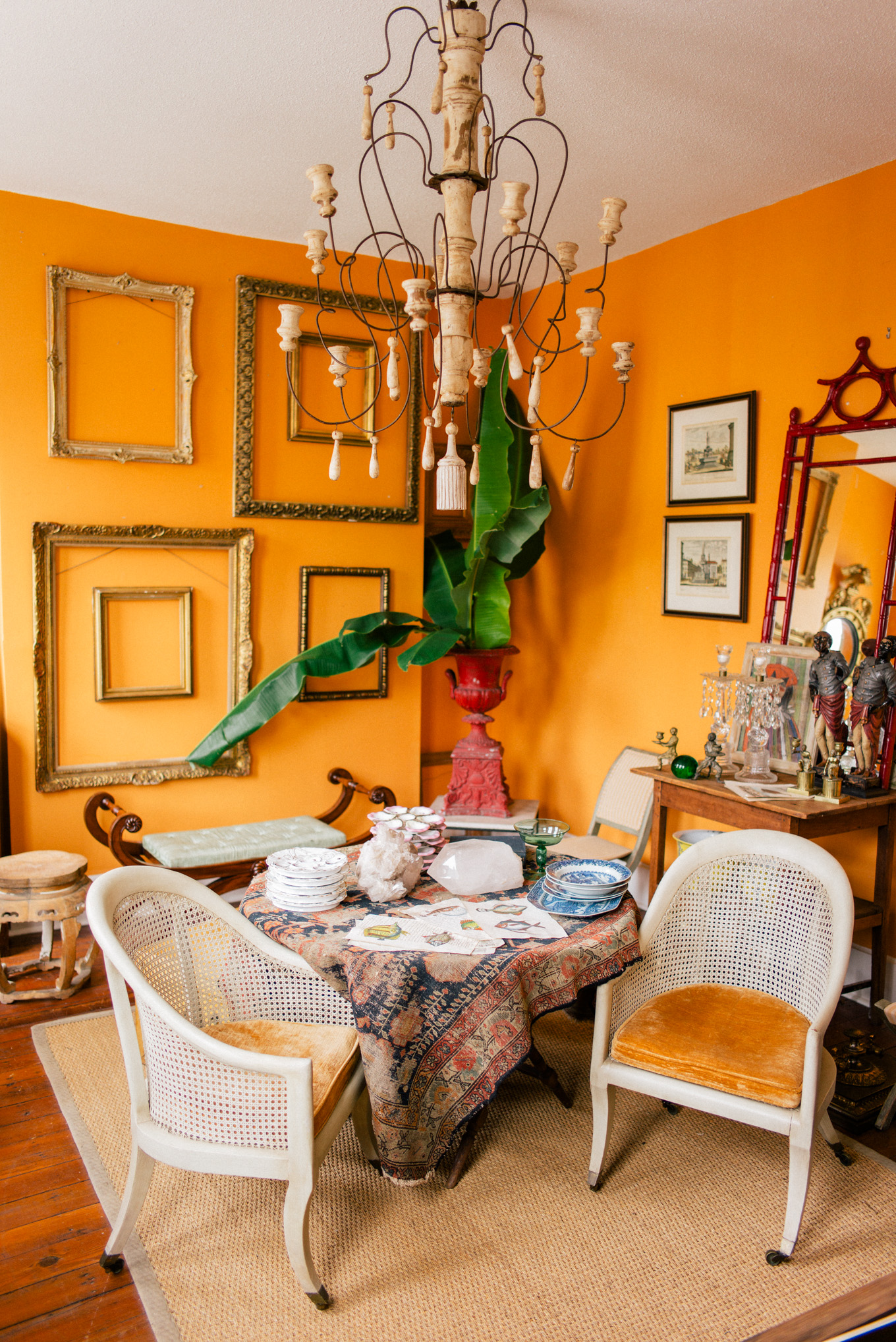
OMB: I love a caned chair. Caning is the weaving in the of rattan vine that results in a pattern of circles and diamonds – often used in the seats and backs of chairs.
JMP: It’s a material that retained popularity throughout periods and styles – you can have a Bauhaus caned chair, or early 19th century English chairs like these.
OMB: During a South Carolina summer, a caned chair is a welcome place to sit because of its breathability, and durability, which explains why the technique was so popular in island cultures.
If you fall in love with something while on the hunt, don’t be afraid to use it in a way that wasn’t originally intended. Often the most interesting interiors incorporate items such as these.
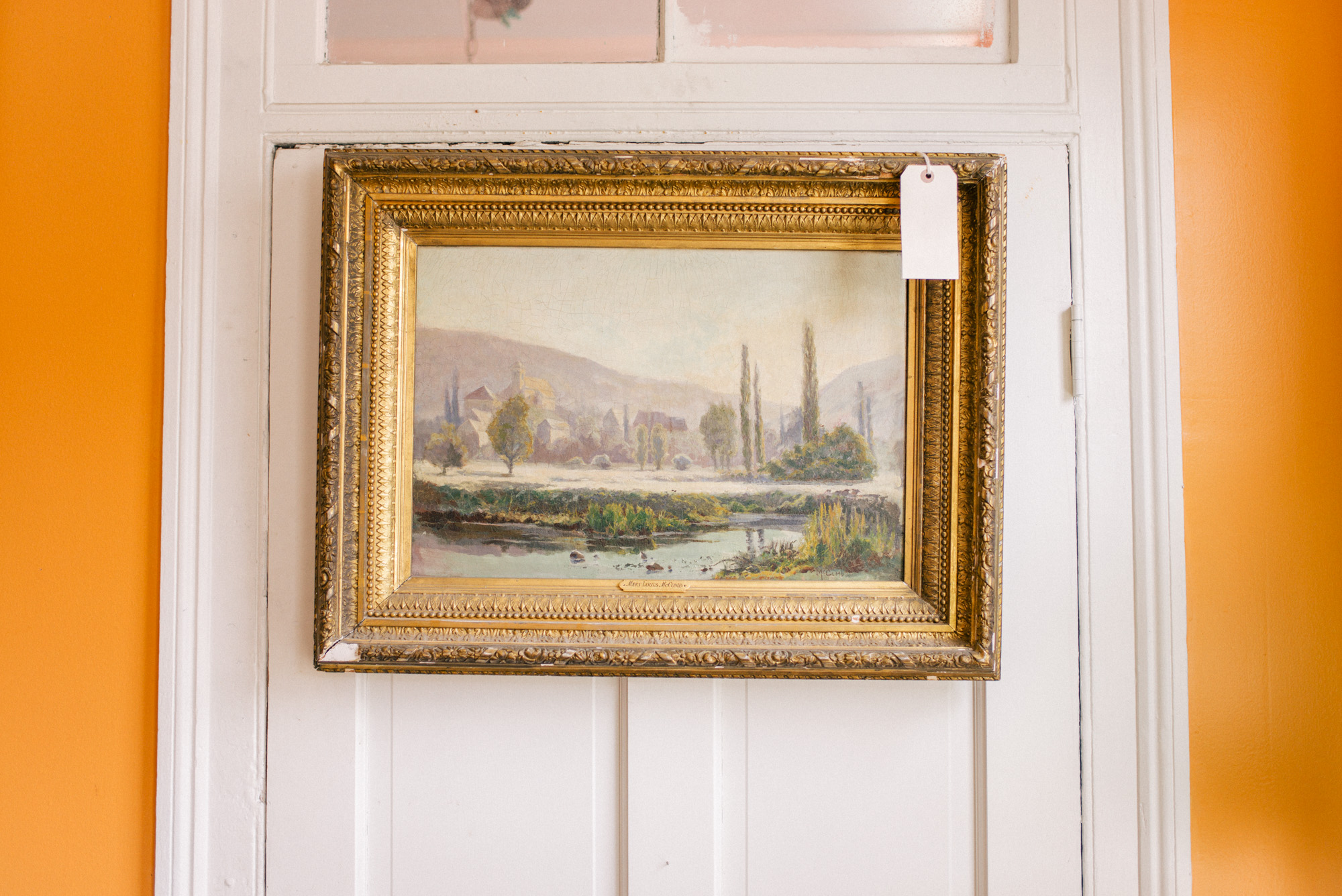
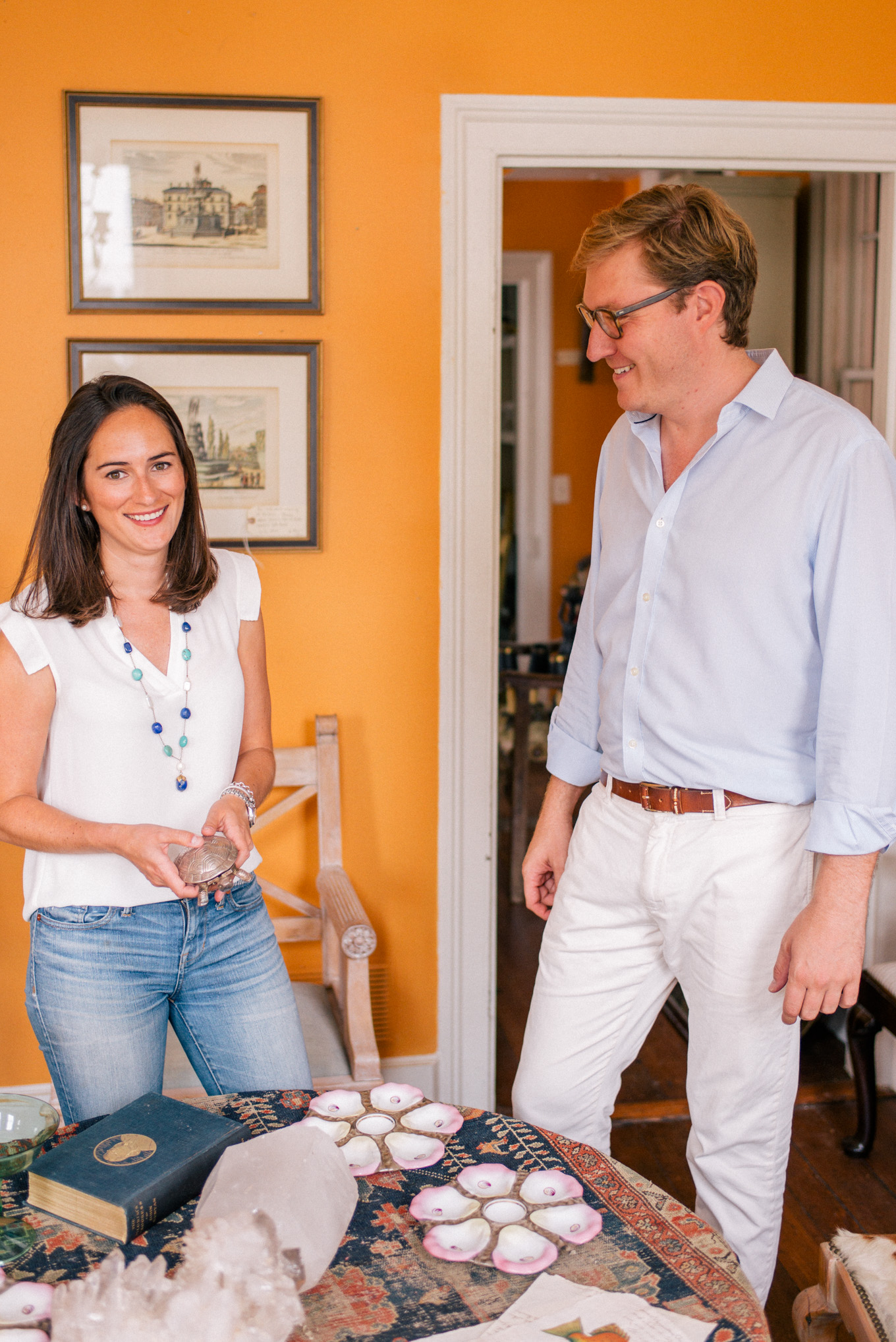
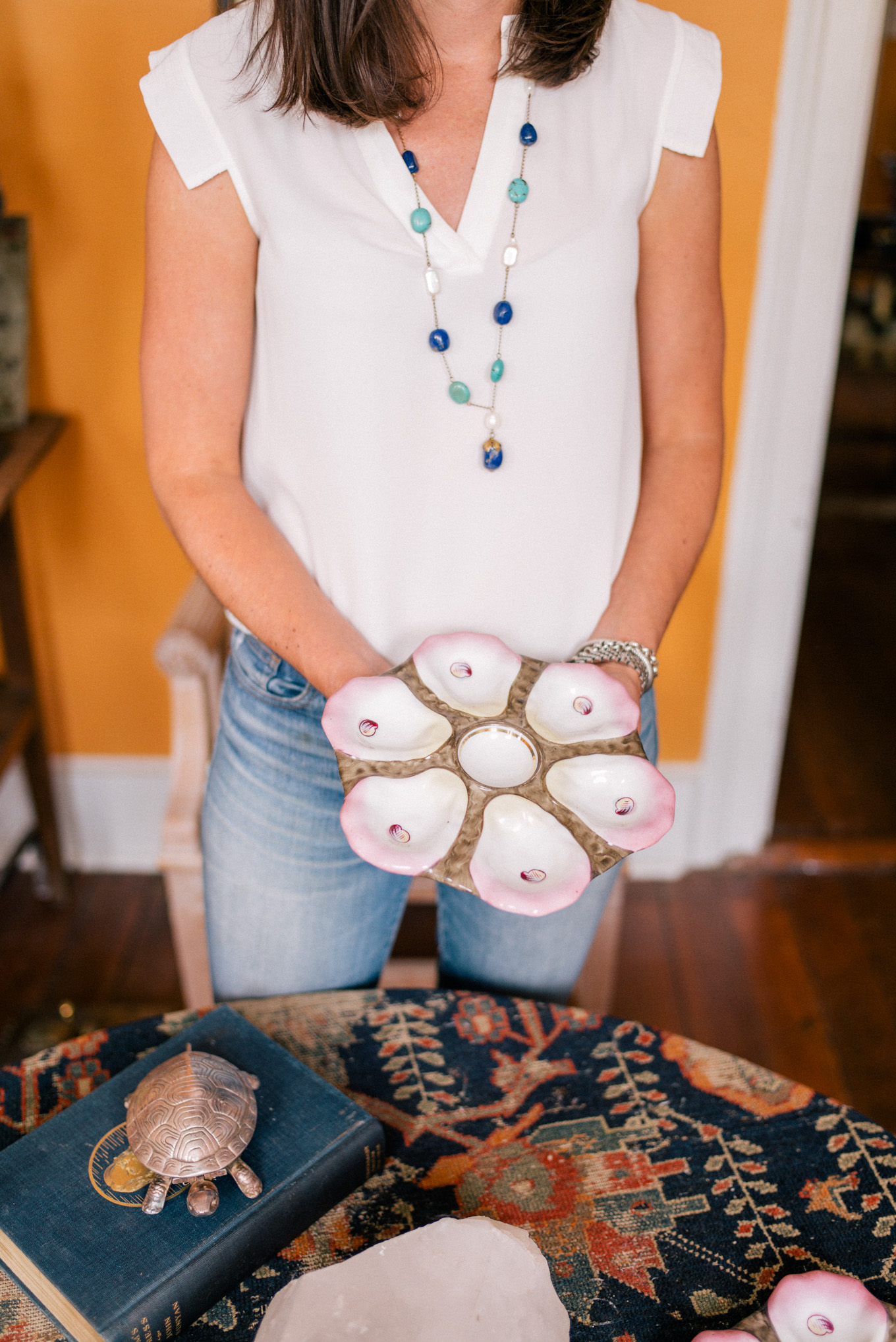
OMB: I’m holding a turtle!
JMP: In fact, you’re holding a 19th century French silver dinner bell. Often practical items from the past become unique decorative objects today.
OMB: So when I press his tail …
JMP: No, Olivia, I’m not bringing you dinner.
OMB: I was sort of hoping some oysters would magically appear – looks like you have plenty of plates! I actually would love to arrange these pink pretties on a wall, thus perpetuating the reuse of practical items from the past as decorative objects.
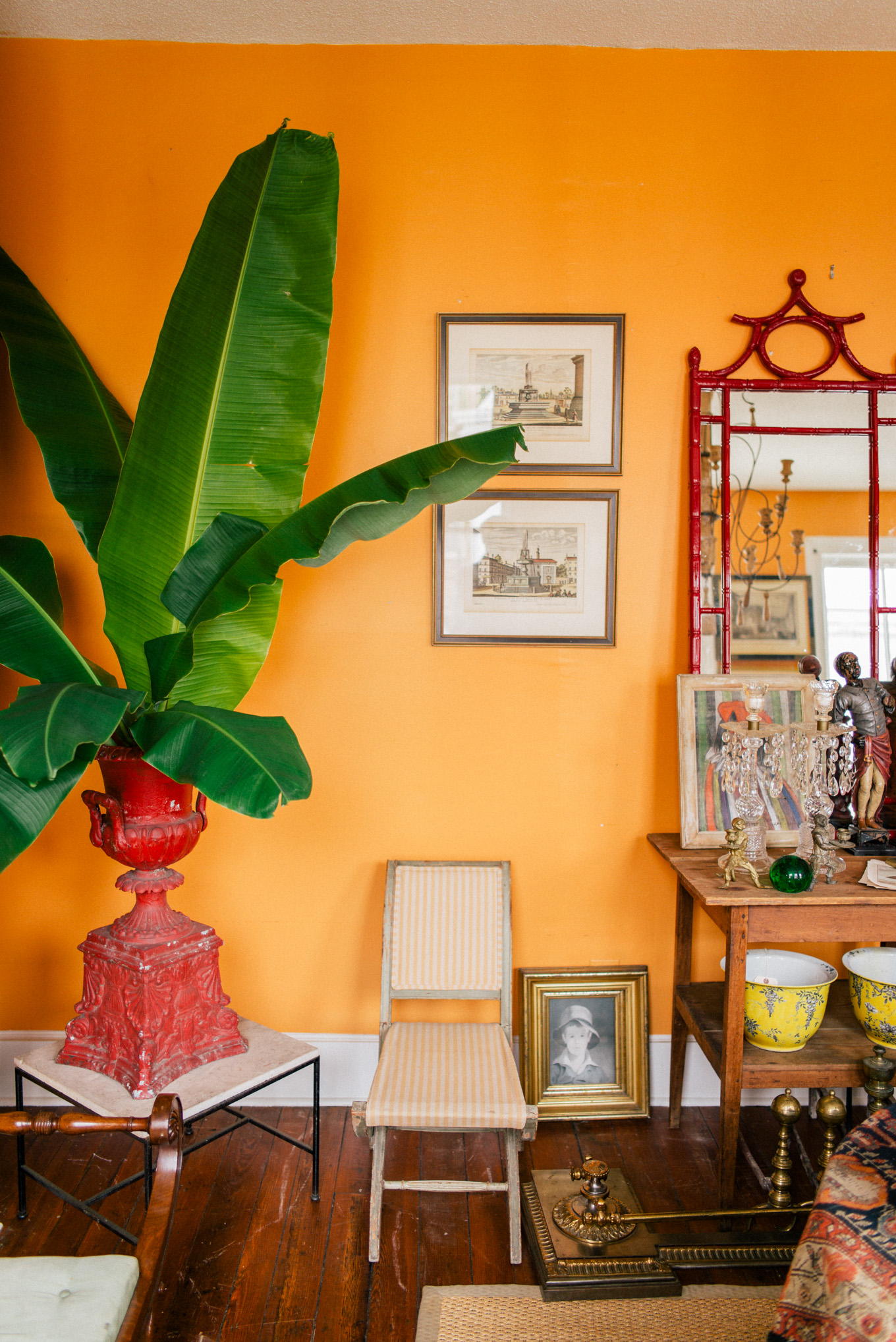
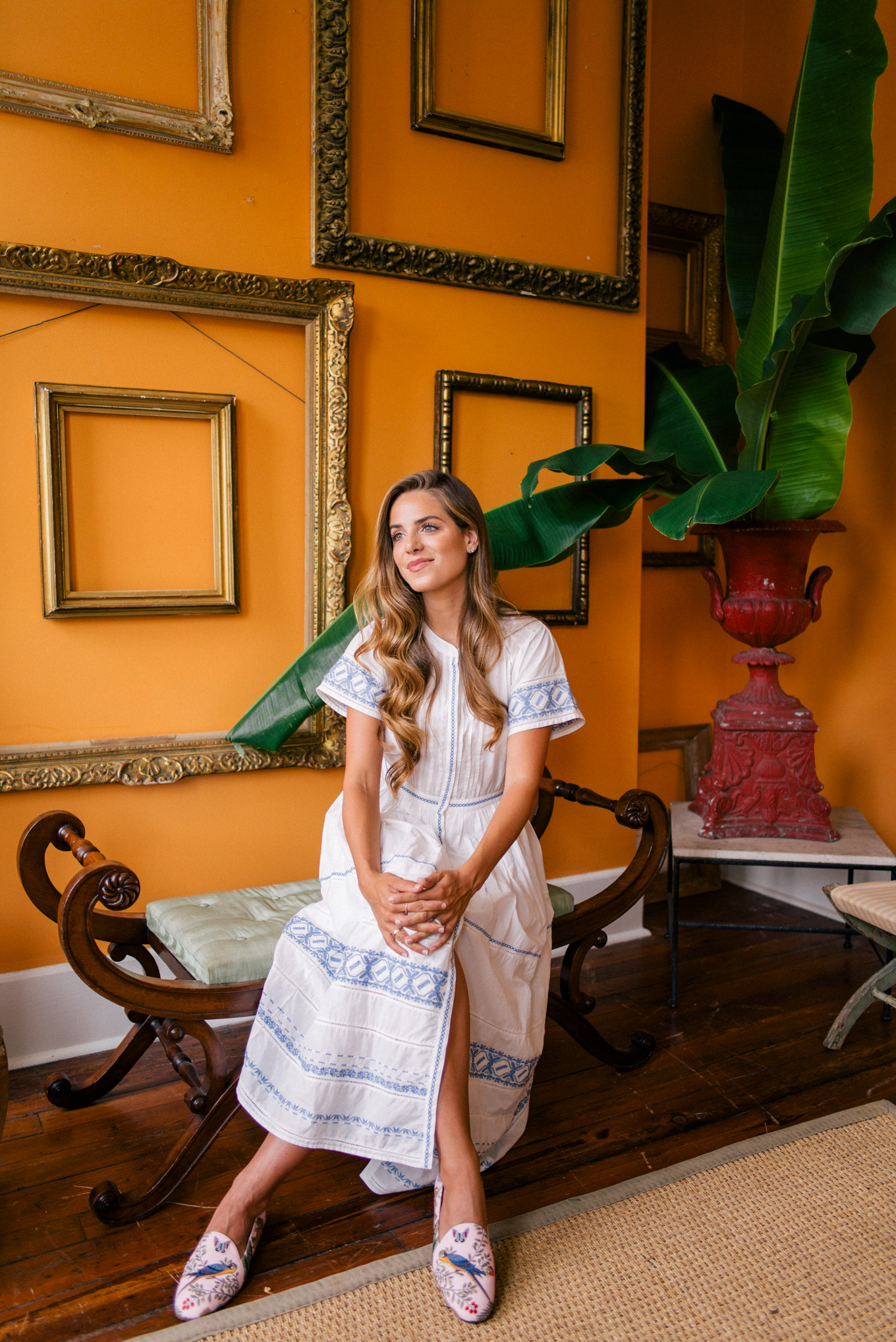
OMB: I think the line between what is for indoors and what is for outdoors has been a bit blurred in the design world lately for the better(!) – I often encourage clients to bring garden elements inside, like you’ve done here. Love that you brought the garden with the elements … aren’t these branches from a tree behind the shop?
JMP: Yes! – they are banana leaves. They have such a modern and architectural quality to them, and they look super chic in the more ornate urn – a common occurrence in a Charleston garden.
OMB: The urn coordinates fabulously with the red faux bamboo pagoda mirror – a fun midcentury piece.
JMP: Completely coincidental that the two reds ended up together. And now that you mention it, the 18th century Roman engravings depict public fountains, which brings us right back to the indoor/outdoor theme in this vignette. Collections of engravings are a great way to add an element of the antique to a room, without breaking the bank.
When it comes to shopping for antiques, you have to keep your eyes peeled for things where you least expect them … even if it’s at the bottom of a bottle of vino.
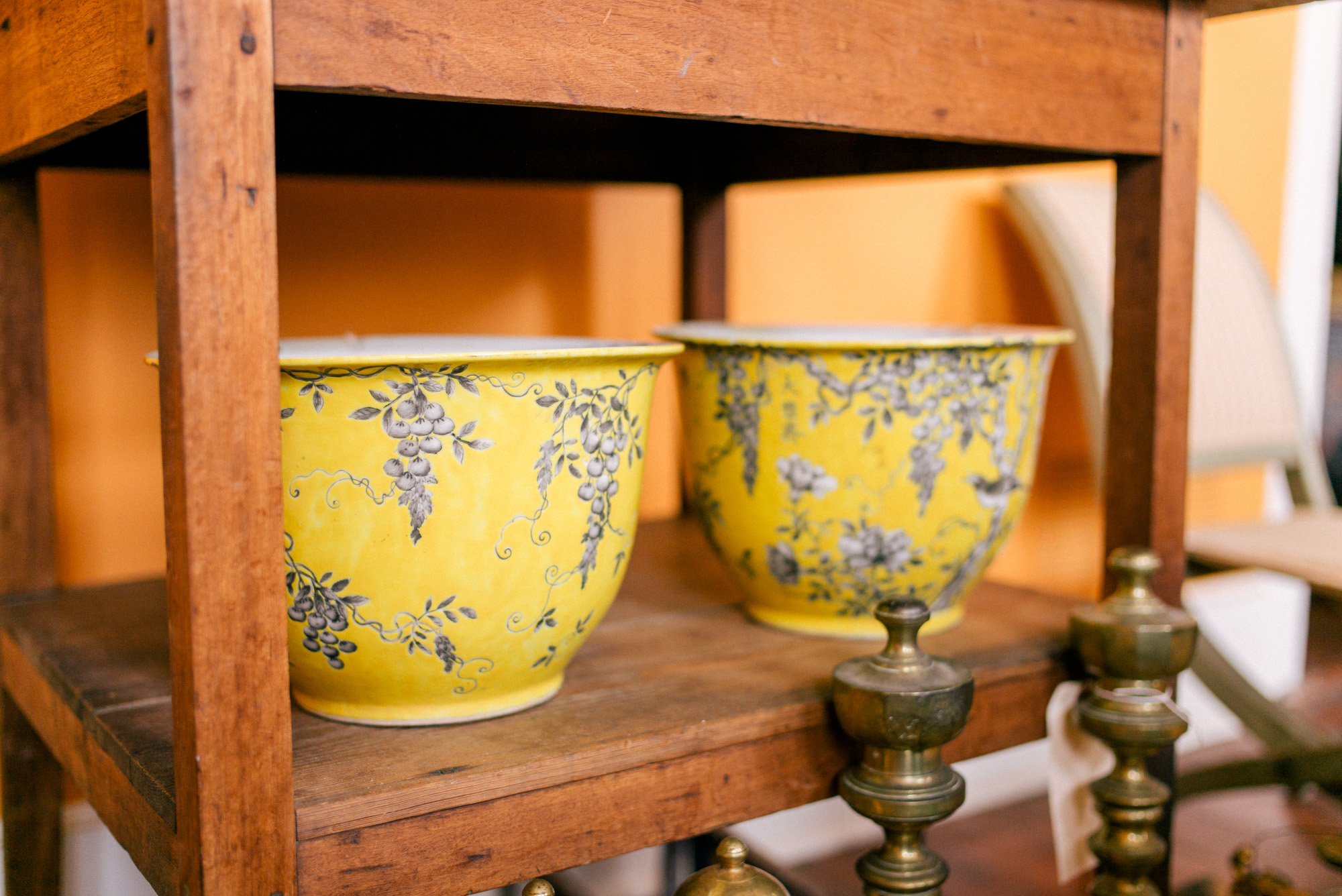
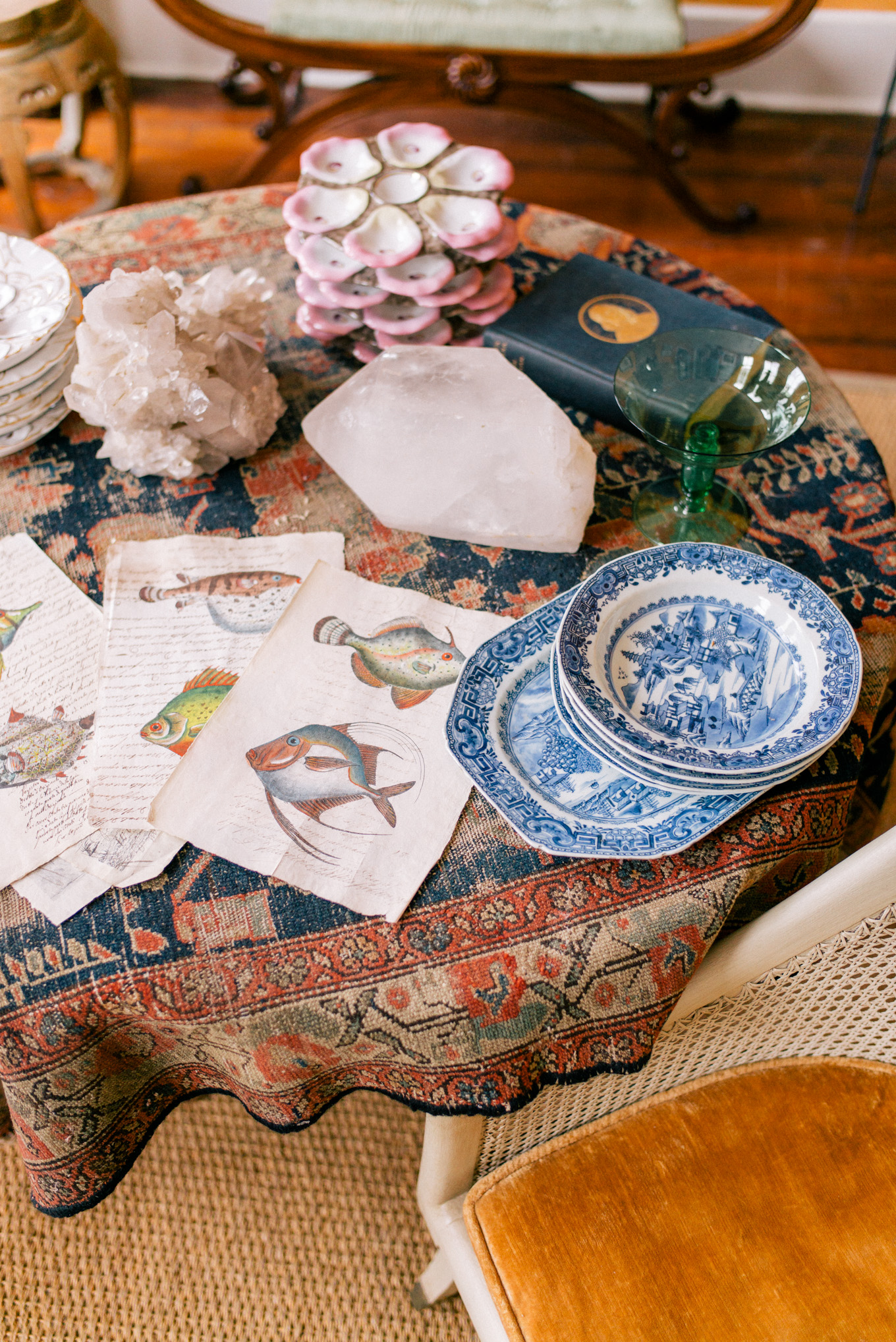
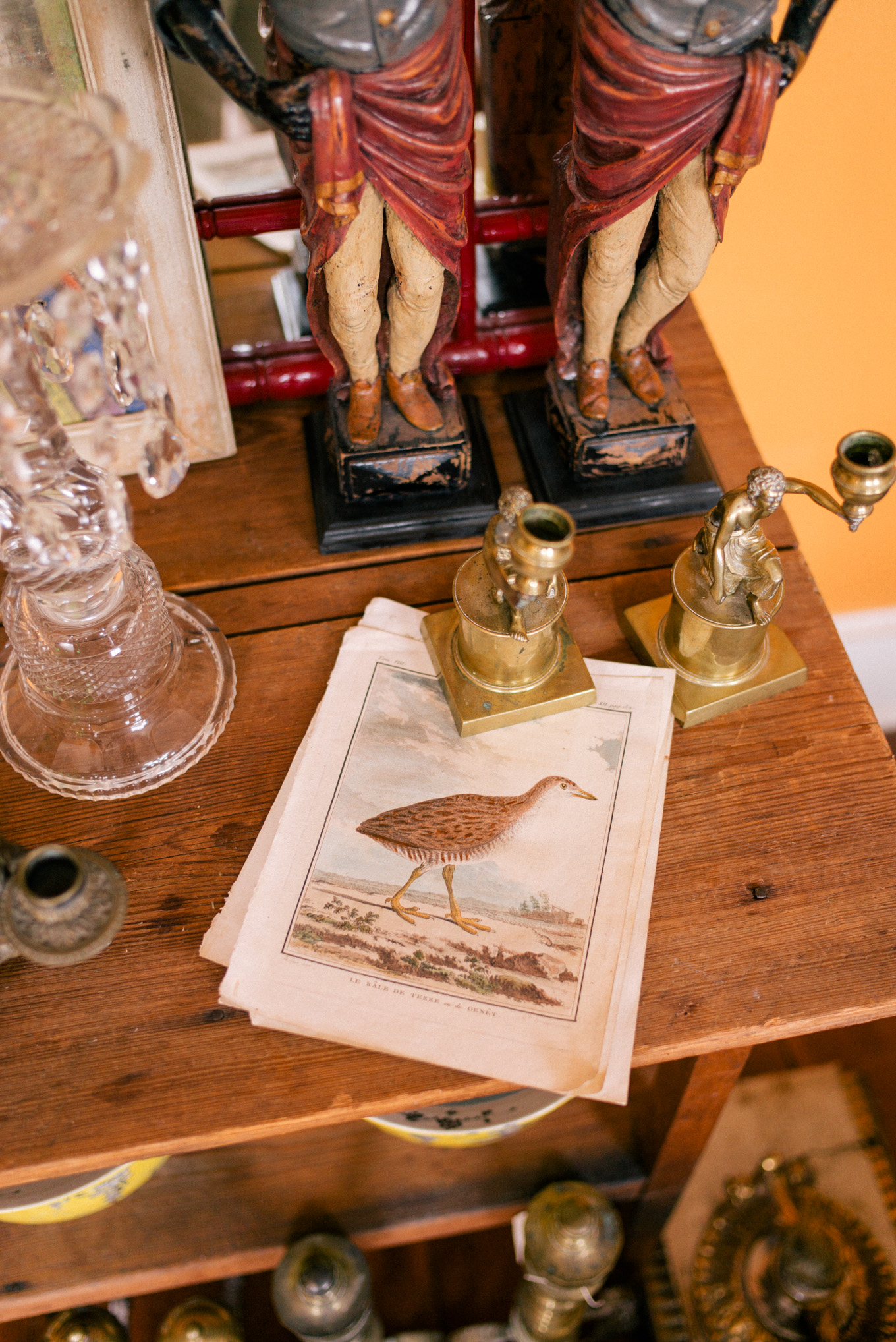
OMB: Ooooh! The fish!
JMP: Sometimes finding antiques can be a bit of an adventure! On a recent trip to Italy, after too much vino, I stumbled (literally) upon a shop where a woman was selling engravings. Upon closer inspection, I realized that the fish were printed atop 18th century handwritten documents. Needless to say I scooped them up and brought them back to Charleston.
OMB: The word serendipitous comes to mind …
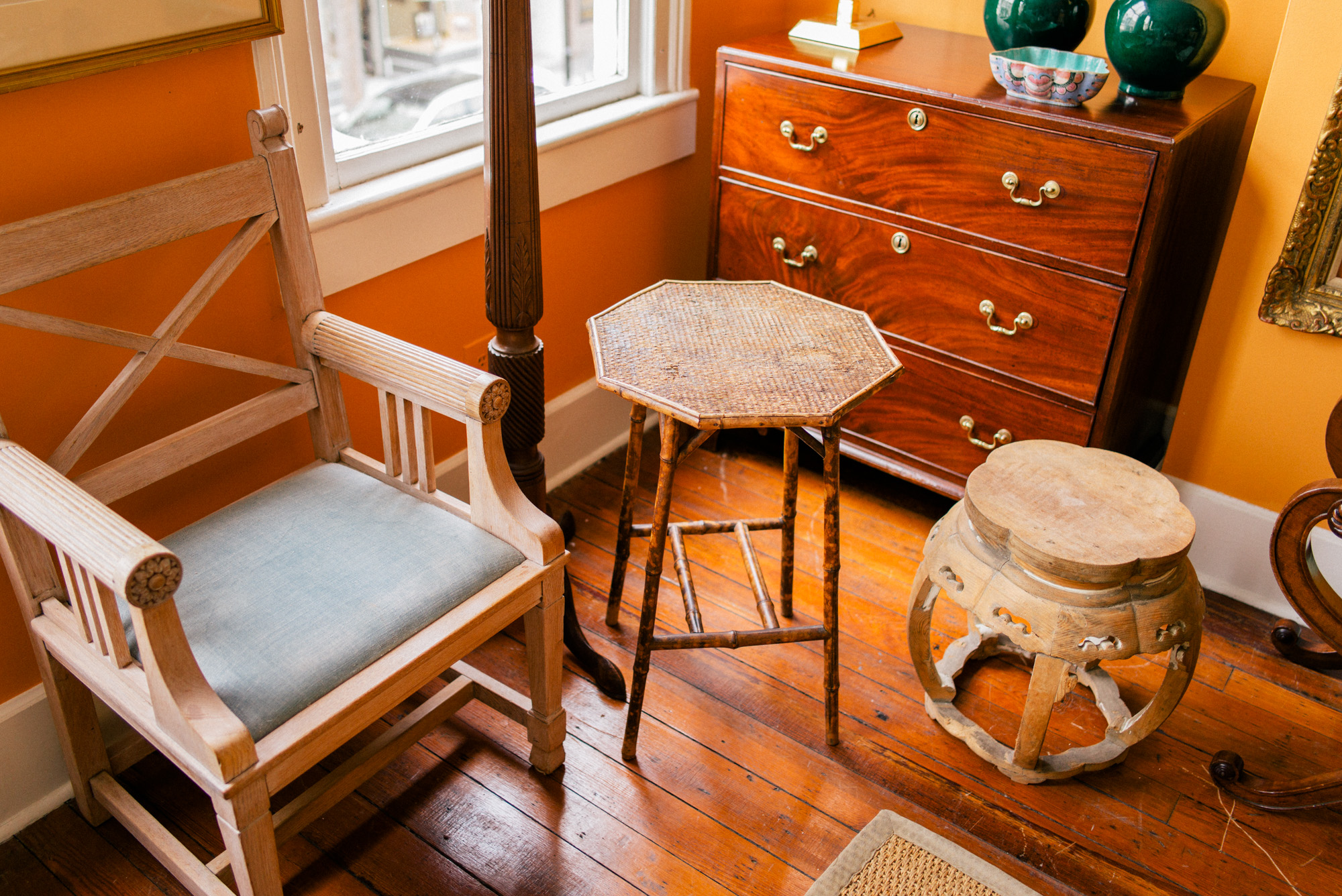
OMB: A piece of antique furniture, like an historic building, offers clues to its story – you just have to look closely.
JMP: Exactly – take for example this Chinese stool, which when flipped over reveals that it was at some point covered in a black lacquer, and has now been stripped of its paint to reveal the raw wood underneath.
OMB: What’s so great about this stool is that I see it as one of the more contemporary pieces in the shop, however, what’s interesting is that so often we are lacquering antiques to make them modern, instead of the reverse. Hello Lacquered Life.
In case you missed Olivia’s previous Interior Design contributor post, you can read it here and don’t skip our Q&A with her from last post. What topics would you love to see covered on future GMG Interior Design series? Share your thoughts in the comment section below.
